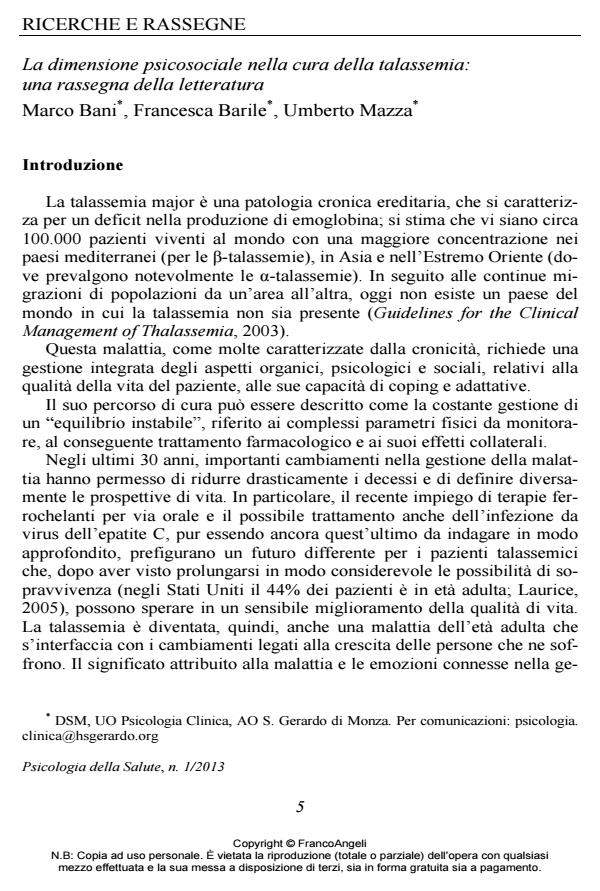The psychosocial dimension in the treatment of thalassemia: a review of the literature
Journal title PSICOLOGIA DELLA SALUTE
Author/s Marco Bani, Francesca Barile, Umberto Mazza
Publishing Year 2013 Issue 2013/1
Language Italian Pages 22 P. 5-26 File size 325 KB
DOI 10.3280/PDS2013-001001
DOI is like a bar code for intellectual property: to have more infomation
click here
Below, you can see the article first page
If you want to buy this article in PDF format, you can do it, following the instructions to buy download credits

FrancoAngeli is member of Publishers International Linking Association, Inc (PILA), a not-for-profit association which run the CrossRef service enabling links to and from online scholarly content.
Thalassemia major is a genetic disorder that requires very frequent blood transfusion and an iron chelation treatment as well as a multidisciplinary management. Like any chronic disease causes a great impact on quality of life, psychological well-being and family background of these subjects. The medical advances of the last 30 years have improved the life expectancy of these patients who now may reach adulthood, have a work, have children, but they need a constant compliance to treatment. The aim of this work it to review the results of the last 10 years of research in relation to psychosocial difficulties of patients and families, the quality of life and the presence of psychopathology in thalassemic patients, also across different cultural contexts. The data emerging from the review show a greater level of psychopathology compared with control subjects and a lower quality of life for both patients with thalassemia and their family members, suggesting a greater effort towards the spread of psychosocial interventions that already exist in some situations.
Keywords: Thalassemia, psychopathology, caregiver, coping, quality of life
Marco Bani, Francesca Barile, Umberto Mazza, La dimensione psicosociale nella cura della talassemia: una rassegna della letteratura in "PSICOLOGIA DELLA SALUTE" 1/2013, pp 5-26, DOI: 10.3280/PDS2013-001001